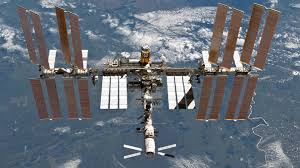Russia now plans to build and manage its own space station, which it aims to launch into orbit by 2030. According to an Interfax report, its space module is being assembled by the Energia corporation, and is set to cost at least $5 billion.
After more than two decades of international cooperation in space research, Russia this week announced that it would be withdrawing from the International Space Station in 2025, and build and manage its own floating laboratory that will be launched into orbit by 2030.
The decision to leave also comes at a time when relations between Russia and the US have been steadily deteriorating on multiple fronts, with the two powers also accusing each other of militarising space.
Roscosmos space agency chief Dmitry Rogozin was quoted as saying by the Interfax news agency, “If in 2030, in accordance with our plans, we can put it into orbit, it will be a colossal breakthrough.”
“The will is there to take a new step in world manned space exploration.”
Read more:Nine and counting: UAE, Singapore shut out fliers from India
What does the International Space Station do?
A space station is essentially a large spacecraft that remains in low-earth orbit for extended periods of time. It is like a large laboratory in space, and allows astronauts to come aboard and stay for weeks or months to carry out experiments in microgravity.
The Mir space station of the former Soviet Union, and later operated by Russia, was functional from 1986 to 2001. The ISS has been in space since 1998, and has been known for the exemplary cooperation between the five participating space agencies that have been running it: NASA (United States), Roscosmos (Russia), JAXA (Japan), ESA (Europe), and CSA (Canada).
For over 20 years since its launch, humans have continuously lived and carried out scientific investigations on the $150 billion ISS under microgravity conditions, being able to make breakthroughs in research not possible on Earth.
As per NASA, 243 people from 19 countries have so far visited the ISS, and the floating laboratory has hosted more than 3,000 research and educational investigations from researchers in 108 countries and areas, carrying out cutting edge research in various disciplines, including biology, human physiology, and physical, material and space science.
The recent US-Russia space rivalry
Russia has been a crucial player in making the ISS a success, with other space agencies relying on advanced Russian modular space station construction technology to build the space station in the initial years, as per a Financial Times report.
Russia was also indispensable because of its Soyuz passenger vehicle, which served as the only way for transporting astronauts to the ISS ever since the US retired its Space Shuttle Program in 2011. This reliance on Russia ended last year, however, when the US started to use the SpaceX system developed by Elon Musk.
This was a major blow for Roscosmos, as this meant an end to the funding it received from NASA for carrying astronauts to the space station. Between 2011 and 2019, NASA had spent $3.9 billion on the Soyuz flights, the report said.
Next year, the US is also expected to have another domestic option apart from SpaceX, as Boeing’s delayed Starliner capsule is expected to become operational.
The development also comes at a time when relations between the West and Russia have been going from bad to worse. The US has blamed the Kremlin for carrying out the “SolarWinds” hack and interfering in the 2020 election. Last week, Russia received flak from the NATO alliance after it was accused by the Czech Republic of being involved in a 2014 explosion at an arms depot.
Last year, the US accused Russia of carrying out a weapons test after a projectile was said to have been fired from a Russian satellite. Russia, in return, blamed the US for treating space as a “military theatre”.
Read more:US issues advisory, warns Americans to avoid travelling to India amid spike in COVID-19 cases
So, what does Russia plan to do now?
Russia now plans to build and manage its own space station, which it aims to launch into orbit by 2030. According to an Interfax report, its space module is being assembled by the Energia corporation, and is set to cost at least $5 billion.
The station will reportedly orbit the Earth at a higher latitude, enabling it to better observe the polar regions, especially since Russia plans to develop the Arctic sea route as the ice melts.
Building a new station would also help Russia tide over challenges that its cosmonauts currently face on the ageing ISS, such as conducting experiments and adapting the latest technology to a hardware architecture that is over two decades old.
Russian Deputy Prime Minister Yuri Borisov said, “We can’t risk the lives [of our cosmonauts]. The situation that today is connected to the structure and the metal getting old, it can lead to irreversible consequences – to catastrophe. We mustn’t let that happen”.
However, leaving the ISS would also mean that Russian researchers would lose access to a laboratory that has seen over 15 years of engineering and assembly work to build it, and whose research potential is only now truly expected to take off. NASA has ruled out retiring the ISS until at least 2028, and may continue to use it after that by upgrading key systems, the FT report said.
Borisov also said that Russia would manage the space station itself, but has left the door open for other countries to join. Last year, Russia rejected a US offer to be a part of the Artemis program, and last month signed an agreement with China to jointly develop a lunar base.





































